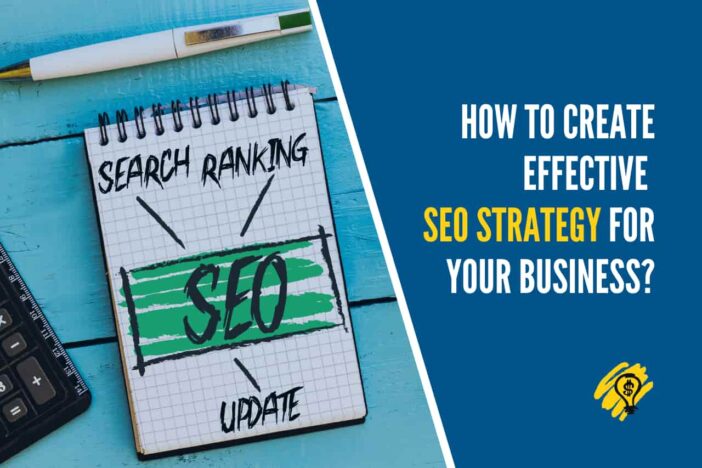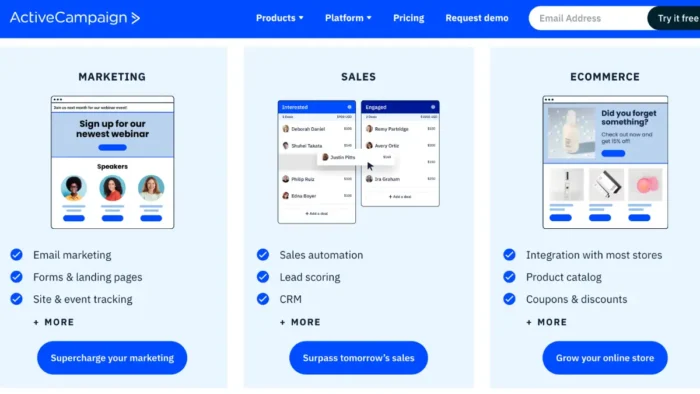While SEO strategy has been around for decades, it’s recently become more complex as search engines continue to improve their algorithms and the sheer volume of content on the Internet increases.
In today’s world, people are not only looking for the right information online but also they are trying to get information through various channels. And when it comes to searching for your services and products, it becomes very important to keep up with the latest trends so that you can attract more people.
This is why you must create an effective SEO strategy for your business. But creating a strong SEO strategy can be challenging at times because it is one of the most tedious tasks. Here, we have given some helpful tips for you.
An SEO strategy plan is a detailed plan covers an extended period, a way to achieve a goal. We are talking about a numerical goal, which can be characterized as:
- limited in time;
- achievability;
- measurability.
Goal setting
Variants of goals to promote the site on the Internet:
- increasing the number of sales. For commercial sites, an essential indicator of the effectiveness of promotion is the conversion of site visitors into buyers, return on investment;
- growth of positions by keyword phrases. This goal is relevant both for informational resources and for the promotion of online stores;
- increasing the number of unique visitors. Such a goal is essential for promoting blogs, entertainment portals, and companies which do not yet know which users will convert into buyers.
Related: SEO for Business Growth: 6 Ways SEO Leads to Growth
Principles that will help develop an effective strategy for SEO
Define your goals
Understanding specific goals makes it easier to achieve them. It also allows you to track the growth dynamics to understand what stage of progression to the destination you are at.
Goals that can be achieved with the help of SEO:
- increase in traffic;
- increase brand visibility;
- It is increasing the conversion from the search.
A local SEO plan requires a slightly different approach. In particular, I work with Google My Business, aggregators, regional media, and opinion leaders.
Analyzing available resources
Much depends on the resources at your disposal. We are talking about the budget for promotion, which includes:
- payment for the work of SEO specialists;
- the cost of developing content;
- the cost of external promotion work (links, etc.);
- charge of programmers, layout designers, and other performers.
Audit the site
What is this and what is it for? A detailed study of the site, demand, and niche allows you to identify possible obstacles in the way and eliminate them. However, because of various technical errors and problems in the structure of the site and landing pages, elaboration of other factors can not give the desired result.
You will have to update and expand the semantic core and remove duplicate pages to work with the adaptivity.
During the audit, attention is paid to technical aspects and the current state of internal optimization. Specifically:
- until the page is indexed, it does not appear in the output to users, so for the effectiveness of the SEO strategy separately need to devote time to this point and get backlinks indexed faster;
- presence and correctness of sitemap.xml/robots.txt files;
- Title and Description meta tags and their quality;
- audit of analytics systems and web admins panel;
- whether there are duplicates and “404” errors on the site;
- the quality of content on landing pages;
- the quality of the current link profile of the site, etc.
A point that is often overlooked is the issue of usability. Content and optimization should be a priority. You can also create links for SEO without content, check for more.
All opportunities for influence are within the site. At a minimum, it is worth making sure that the site meets the following criteria:
- has convenient and intuitive navigation;
- the pages can be reached in no more than 3 clicks;
- its loading time is no more than 4 seconds;
- the content on the pages is informative and easy to understand;
- forms and the ordering process are simple and do not contain many fields;
- there are no “broken” links to pages that do not exist.
Study your competitors
This is necessary to understand the current level of competition in the niche and understand how much effort will be needed. Search traffic is a finite value, and to get it to the pages of your site, you have to take it from someone else.
The strategy phase analyzes metrics without a page-by-page comparison. In particular, the following:
- the age of the domain name;
- the number of pages in the index;
- approximate attendance on SimilarWeb;
- visibility in searches and the most visited pages;
- the availability of the adaptive version of the site;
- the quality of internal optimization pages;
- the level of external optimization;
- availability of a blog or a section with informative articles on the site;
- availability of customer feedback and its format;
- presence of interactive parts.
All this allows you to make the strategy more detailed. Sometimes it is enough to have competent internal optimization and a slight “boost” of links. You can learn more here at rextheme.com. And sometimes it happens that after the analysis of competitors, it becomes clear that we will have to work in all directions and fight for each low-frequency.
Well, one more thing – the analysis of competitors allows you to find a lot of ideas to improve your site. No one is preventing you from adopting the best practices if you desire and enable the budget.
Determining directions and setting priorities
You can define a more specific list of tasks at this stage and make a step-by-step plan for their implementation.
For example, you can highlight the following areas of work:
Implementation of suggestions, error correction, and improvement of the site based on the results of the audit;
- building an adaptive version of the site;
- optimization and refinement of existing pages;
- creating new landing pages for essential query clusters;
- work on content marketing within the site itself;
- external content marketing (guest posts);
- building link mass by other methods, such as crowd marketing;
- selection of conversion requests and their “push” to the top 1;
- work on improving the usability, etc.
Generating a list of KPIs
The use of KPI provides a transparent understanding of growth dynamics and makes it possible to evaluate the return on investment.
Relation to creating SEO strategy can be divided into the following list of KPIs, which should be tracked in the process of promotion:
- the volume of traffic from organic search and other channels;
- the visibility of the site in the semantic core;
- the cost of attracting visitors;
- the cost of drawing a lead;
- conversions;
- ROI (return on investment).
Conclusion
No one can give you a recipe for a universal SEO website strategy, which is guaranteed to lead you to success. Everything is individual, and each project requires a different approach.
In addition, search engine algorithms change regularly, which affects the weight of certain ranking factors.
Having a sound strategy for SEO is a fundamental basis for successful promotion. Only by having a step-by-step work plan in hand can you concentrate on critical things, gradually improving the site itself and achieving good results in the long run.



